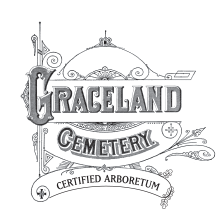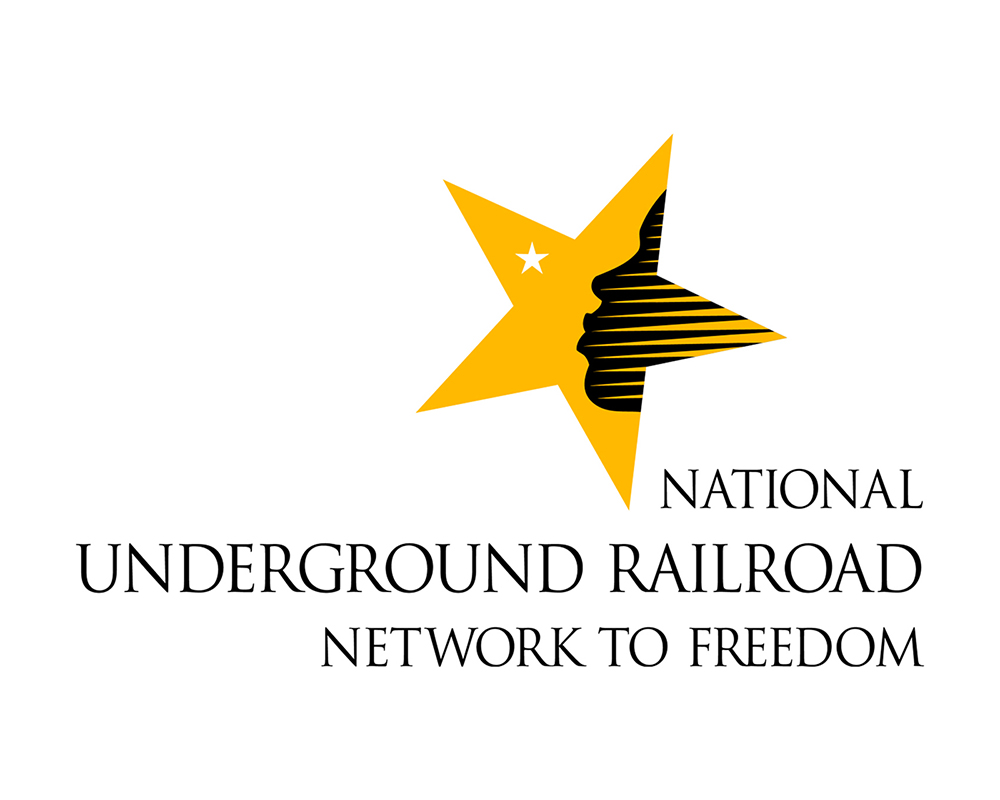Chicago's Underground Railroad
An estimated 3,000 to 4,500 persons escaping enslavement used Chicago's Underground Railroad. For most, it was a stepstone to freedom in Canada, and for others, it became home. Graceland Cemetery is the resting place of at least 29 activists who helped them.
The earliest arrivals came to Chicago in the 1830s. By 1860, Chicago was known downstate as "a hotbed" of abolitionism.
Why Chicago? Its location on Lake Michigan was the main reason. Many of those bound for Canada boarded a steam-powered boat at the lakeshore and got off at Detroit, where freedom lay on the other side of a river.
Another reason was the activism of the City's free Black population. Newspaper accounts tell of streets, docks, and courtrooms packed with people enraged by an arrest, or by a slave-catcher or kidnapper on the prowl. White abolitionists joined them and received most of the publicity from the white-owned press.
In 2021, Graceland Cemetery was added to the National Park Service's Network to Freedom in recognition of the Underground Railroad activists buried here.
To read more about the Graceland UGRR activists' stories, click this link (UGRR Stories).
UGRR Activists at Graceland
There are 29 known UGRR activists buried at Graceland:
Isaac Newton Arnold was a politician, attorney, and biographer born in New York State. He defended people arrested for sheltering escapees from slavery, but perhaps his biggest impact on Chicago's UGRR was as a member of the Illinois legislature, where he helped arrange funding for the Illinois and Michigan Canal. Completed in 1848, the Canal made transportation to Chicago much easier from downstate.
Emma Jane Gordon Atkinson was almost certainly one of the "Big Four," four legendary Black women who led Quinn Chapel's Underground Railroad operations. She was born in Connecticut, her husband Isaac Atkinson in Virginia, each had a parent who was Cherokee. Isaac ran a successful omnibus line (horse-drawn wagons) and then worked for the Chicago and Northwestern Railroad.
Ailey Maria Richardson Bradford was born in Tennessee, her husband Henry Bradford in Virginia. Henry was a barber and helped Black Chicagoans flee to Canada after the 1850 Fugitive Slave Law was passed. During the Civil War, Henry helped support "contrabands," people who had been freed by the Union Army. Ailey was the older sister of Mary Richardson Jones and helped needy families.
Philo Carpenter, born in Massachusetts, was Chicago's first pharmacist. He and his wife Ann Thompson Carpenter treated cholera patients at the risk of their own lives. They sheltered an estimated 200 freedom seekers in their home and Philo's shop. Chicago's Carpenter Street and a school are named for Philo, and Racine Avenue was originally named Ann Street in honor of Ann.
James H. Collins became known as the attorney you wanted if you were arrested for sheltering freedom seekers. Born in New York State, he formed legal partnerships with several distinguished lawyers who are buried at Graceland, including Justin Butterfield. His wife Olive Spencer Collins was active in the anti-slavery society for women in Illinois.
L. C. Paine Freer was born in New York State and studied law with James H. Collins. He was known to chase slave-catchers on horseback and helped John Jones free a man. With his wife Esther Wickes Marble Freer, he dined with the Joneses at a time when interracial socializing was extremely rare.
Charles Goodrich Hammond, born in Connecticut, was famous as a railroad man and reportedly concealed freedom seekers on special baggage cars. In 1859, Hammond helped Allan Pinkerton make arrangements for John Brown and his party to reach Detroit by train.
Joseph Henry Hudlun was born enslaved in Virginia, and in Chicago, he married Anna Elizabeth Lewis Hudlun, born in Pennsylvania to a freed mother. The couple were active members of Quinn Chapel and sheltered freedom seekers in their home near Dearborn Station. They became community heroes after the Great Chicago Fire for opening their doors to homeless families and for Joseph's rescue of documents at the Chicago Board of Trade where he worked as custodian. Joseph is buried at Graceland, Anna at Mount Greenwood, each with some of their many children.
John Jones was born free in North Carolina but was at risk of enslavement numerous times. He married Mary Richardson Jones from Memphis, Tennessee. Trained as a tailor, John became both a successful businessman and the leader of Chicago's Black community. He helped run an agency that helped Black Chicagoans find jobs, homes, and loans. John and Mary sheltered escapees in their home and also hosted Frederick Douglass and John Brown.
Edwin Channing Larned was an attorney and orator, born in Rhode Island. With George Manierre, he helped defend Moses Johnson, a free Black man who had been wrongly arrested, and he later served on the defense team in the Ottawa Rescue Case. President Lincoln appointed him U.S. District Attorney for the Northern District of Illinois, where he dismissed indictments against people who had helped freedom seekers escape.
George Manierre was an admired and beloved judge. Born in Connecticut, he served in a variety of elected positions, and he and his wife, Ann Hamilton Reid Manierre, sheltered freedom seekers in their home. With Edwin Channing Larned he helped defend Moses Johnson. The Manierres lost two young children who were buried in Chicago's City Cemetery, located where Lincoln Park is today, and their activism for better conditions there helped lead to the early success of Graceland Cemetery.
Mahlon Dickerson Ogden was a successful businessman. He freed a Black man who had been auctioned off by the Sheriff for not having freedom papers. Ogden was born in New York, and his brother William was the first Mayor of Chicago.
Seth Paine was an eccentric idealist who worked as a merchant, banker, minister, social reformer, and Union spy. Born in Vermont, he came to Chicago around 1834 and founded Lake Zurich, where he and his first wife sheltered freedom seekers. During the Civil War, he was one of Allan Pinkerton's best agents behind enemy lines.
Allan Pinkerton is perhaps the most famous of Graceland's UGRR activists. Born in Scotland, he married singer Joan Carfrae Pinkerton, and the couple moved soon afterward to North America. They settled in suburban Dundee where they sheltered freedom seekers, and Allan taught them his trade of barrel-making. He became a detective and the family moved to Chicago, where they continued to shelter people.
Rev. Joseph Edwin Roy was born in Ohio in a log cabin. He and his wife Emily Stearns Hatch Roy first sheltered a freedom seeker in Peoria in 1854. In Chicago, Joseph became an outspoken pastor, and in 1859 he held a prayer meeting on the day John Brown was executed. In 1861 the Roys hid a woman from a US Marshall in their hotel room for two days.
Julius Alphonzo Willard was born in Connecticut and married Almyra Cady Willard from Massachusetts. In the Jacksonville, Illinois, area, they got involved in the UGRR. In 1843, Julius and their son, Samuel Willard, while a college student, were arrested, convicted, and fined for trying to help a woman escape from her mistress. They were posthumously exonerated by Illinois Governor Pat Quinn in 2014. Samuel married Harriet Jane Edgar Willard, and both Willard families continued to shelter freedom seekers.
John McNeil Wilson was born in New Hampshire and in Chicago became a respected judge. He assisted the legal teams for several famous defendants charged under the Fugitive Slave Act and donated money to help John Brown and his party to reach Detroit by train.

